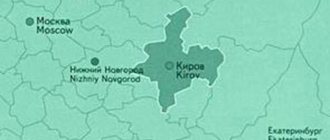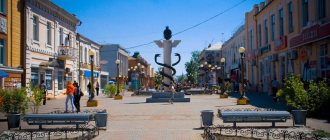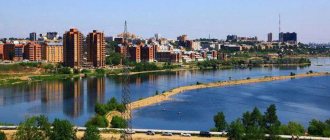Tunka - Zakamensk - Dzhida - Kyakhta
The Soyuz Vostok gas pipeline will supply Russian gas to China. To create the optimal route, Gazprom decided to build a branch through Mongolia and Buryatia. Deputy Chairman of the Government of Buryatia Evgeny Lukovnikov, who heads the republican headquarters for gasification, told Inform Policy what route the line will be laid along.
Previously in the story
Construction of a gas pipeline through Mongolia could begin as early as 2024
The route will start in Taimyr and go through the chemical plant construction zone through the Irkutsk cities of Zima and Sayansk. Next, the gas pipeline will descend into the Tunka Valley and reach the border with Mongolia. But he will not cross the line, he will turn and go through the Kyakhtinsky and Zakamensky districts again to the border with the Mongolian People's Republic. The end point of the gas pipeline will be China.
— During negotiations with Gazprom, we envisaged that we would make one tap in Buryatia. Previously, it will be adjacent to the Dzhida station. We will install a liquefying unit there so that we can have liquefied natural gas (LNG). Most likely, investors will be energy and thermal power plants - CHPP-1, CHPP-2 and Gusinoozerskaya State District Power Plant. For now, their conversion to LNG is being discussed, because this will require large investments,” said Evgeniy Lukovnikov.
Nevertheless, the chances that LNG will appear in Buryatia are high. Gas boiler houses are planned to be installed in suburban social facilities of Ulan-Ude, where there is no possibility of connecting to central heating.
There is a chance that private properties will also receive blue fuel. Gasification of Russia is taking place on behalf of Vladimir Putin, so Gazprom is trying to distribute fuel over as large areas as possible. Where there is network gas, pipe branches lead to the boundaries of private plots to give people the opportunity to install gas heating in their homes. Private owners draw up an estimate, defend it and receive a subsidy from the entity in order to supply gas for themselves. In Buryatia, the same option for gasification of private properties has been proposed.
According to the deputy chairman, construction will be carried out taking into account all environmental requirements in order to preserve flora and fauna.
— In Russia, gas pipelines and pipelines often pass through protected zones, but without this there will be no development. You need to understand that, having received the transport pipe, Buryatia will make a tap for itself and will be able to transfer part of the agglomeration to liquefied natural gas. The tourist area is developing and needs to be converted to gas boiler houses. This will not harm the life of nearby settlements, on the contrary, it will get rid of coal boiler houses and make the air much cleaner,” noted Evgeniy Lukovnikov.
How Buryatia ended up divided into several parts
At the end of September, district anniversaries were celebrated in Aga and Ust-Orda. The history of their appearance is still full of blank pages. And the consequences of the division of Buryatia are still felt today.
Historians say: the historical paradox is that the Buryats are the only people in Russia, divided into several parts. And the roots of this paradox arose even before the October Revolution.
“The Buryats began a gradual narrowing of their former ethnic territory, which, by the way, continues to this day. By January 1, 1917, due to the Buryat land being selected for the colonization fund, the size of land use of the Buryats in Verkholensky district decreased by 51%, Karminsky - by 75%, Khogotovsky - by 51%, Verkhnekudansky - by 75%, Bayandaevsky - by 74%, Olzonovsky - by 49 %, Zungaro-Bykotsky - by 80%, Unginsky - by 64%, Nelkhaysky - by 72%, etc. From their best lands of residence along the banks of the Ingoda River, the Agin Buryats were forced out into the arid bare steppe, where they now live, i.e. in the main areas of settlement of the Buryats, their land plots decreased by 53.5%,” wrote D.D. Nimaev in the book “Buryatia”.
Map of the Buryat-Mongolian Autonomous Soviet Socialist Republic, Transbaikal province and Mongolia, 1924. Source: nature.baikal.ru
First autonomies
In the year of the centenary of the October Revolution, our republic can rightfully celebrate the centenary of the first national autonomy of the Buryats. It was called the State of Buryat-Mongolia. In 1918, the Transbaikal Congress of Soviets proclaimed the Transbaikal region a province, and Soviet power was established in the territory of present-day Buryatia. True, only for a few months - from February until the summer, when it was overthrown by the military dictatorship of Ataman Semenov.
It’s hard to believe now, but after that, in a short period of time, several national and “white” governments proclaimed their power on the territory of our republic. From 1919 to 1920, we managed to have the State of Buryat-Mongolia, the theocratic Balagat state and the Great Pan-Mongolian state.
When the Red Army recaptured Verkhneudinsk from the Whites on March 2, 1920, the future republic found itself divided between two states. Western Buryat lands within the RSFSR. There, on January 9, 1922, the Mongol-Buryat Autonomous Region was formed. It contains Tunkinsky, Alarsky, Ekhirit-Bulagatsky, Bokhansky and Selenginsky aimaks. Moreover, the center of the district was Irkutsk.
The eastern lands became part of the Far Eastern Republic. Moreover, the border passed along the Selenga River. To this day, old-timers of the Baikal region remember how the inhabitants of the opposite bank were called “Manchus”. Moreover, Ulan-Ude, then still Verkhneudinsk, was the capital of the huge Far Eastern Republic for almost 7 months. The Buryat-Mongolian Autonomous Region was also created within it in 1921. It has 4 huge districts - Aginsky, Barguzinsky, Khorinsky and Chita aimaks. The district center is Chita.
When the civil war ended and the Far Eastern Republic joined the RSFSR, the two Buryat-Mongolian autonomous regions were united. On their basis, on May 30, 1923, the Buryat-Mongolian Autonomous Soviet Socialist Republic was formed with its capital in Verkhneudinsk. Since then, we have been celebrating this date as the day of formation of the Republic of Buryatia. Why it did not become a union republic within the USSR, but entered the RSFSR is a subject of study for historians.
"Eastern Eagle"
The Buryat-Mongol ASSR developed rapidly in the first years of its formation. It quickly became one of the leading republics. On July 30, 1930, the East Siberian Territory was formed with its capital in Irkutsk. Our republic also entered this region. In 1934, Verkhneudinsk was renamed Ulan-Ude. In 1936, the East Siberian Territory was abolished with division into the Buryat-Mongol Autonomous Soviet Socialist Republic and the East Siberian Region. In the same 1936, for great achievements in the construction of socialism, the Buryat-Mongolian delegation was invited to a ceremonial reception personally to Stalin. In his speech, he called the leader of the republic, Mikhei Erbanov, an eastern eagle. Many members of the delegation were awarded high government awards of the USSR. It was there that the most famous photograph was taken, which became a poster with the title “Thank you to Comrade Stalin for our happy childhood!” In the photo, the Buryat girl Gelya Markizova is in Stalin’s arms. It seemed that nothing foreshadowed the terrible tragedy just a year later.
In 1936, a million propaganda posters with Stalin and the Buryat girl Gelya were distributed throughout the country. A year later, her father Ardan Markizov and the head of the republic M. Erbanov, who was standing behind, were shot as enemies of the people
Accused of pan-Mongolism
At first, almost the entire national leadership of the republic fell under the rink of repression. Many were shot, including Erbanov, the leaders of the Council of People's Commissars of the republic, the Burtsik, 14 people's commissars, 11 secretaries of administrative committees of the All-Union Communist Party of Bolsheviks, 7 chairmen of administrative executive committees. Most of the prominent figures of the Buryat scientific and creative intelligentsia were killed and exiled to camps. During 1937 as a whole and ten months of 1938, 6,836 people were arrested in Buryatia, of which 4,907 were convicted. 6,267 people were recognized as traitors to the motherland, saboteurs, saboteurs, terrorists, and counter-revolutionary agitators.
2026 people are recognized as members of the pan-Mongolian organization. 1303 of them are representatives of the lama class. Even the future Marshal of Victory, Konstantin Rokossovsky, who served in Buryatia, did not escape accusations of spying for Japan. The girl from the Stalin poster flees with her mother to Central Asia after her father was shot.
It is difficult for the modern generation to understand why the accusation of pan-Mongolism was side by side with the accusation of espionage for Japan.
The fact is that the idea of pan-Mongolism as the creation of a large state uniting all the Mongolian peoples was used by everyone who benefited from it. Not only Ataman Semenov and Baron Ungern, but also the Russian Bolsheviks. They wanted to use pan-Mongolism to export the socialist revolution to the East.
“Up to a certain point, the Comintern was interested in using the “Mongolian card” as an option for the development of the world revolution in Asia,” write historians Yu.V. Kuzmin and V.V. Pork.
The Japanese saw pan-Mongolism as an opportunity to weaken China, which they began to occupy. At that time, the Mongols of Inner Mongolia did not yet have autonomous rights in China.
“Japanese military leaders realized that the founding of a united Mongolia would help put pressure on China and create favorable conditions for the Japanese occupation of the Russian Far East,” notes Mongolian historian B. Batbayar.
It is not surprising that on the eve of World War II, Japan, which came close to the borders of the USSR, became a dangerous enemy. On the direct orders of I.V. Stalin, the NKVD of the USSR cleared the territory bordering Japan-occupied China from “unreliable elements.” 120,000 Koreans and 8,000 Chinese were deported to Kazakhstan and the republics of Central Asia from the Buryat-Mongolian Autonomous Soviet Socialist Republic, Chita region, Khabarovsk and Primorsky territories.”
In Buryatia itself, those accused of pan-Mongolism were accused of spying for the Japanese. Only in the 50s were those accused of pan-Mongolism completely rehabilitated. They will issue acquittals, in which they admit: on the territory of Buryat-Mongolia, and also in the Mongolian People's Republic, there was no counter-revolutionary pan-Mongolian organization.
Section into 5 parts
On September 26, 1937, the East Siberian region was divided into the Irkutsk and Chita regions. By resolution of the Central Executive Committee of the USSR, the Buryat-Mongolian Autonomous Soviet Socialist Republic was divided into several parts. The Aginsky and Ulan-Onon aimaks of the BMASSR were transferred to the Chita region, forming the Aginsky Buryat-Mongolian national district with its center in the village of Aginskoye. Alarsky, Bokhansky, Ekhirit-Bulagatsky, Olkhonsky aimaks were transferred to the Irkutsk region, forming the Ust-Orda Buryat-Mongolian national district with its center in the village of Ust-Orda.
Officially, this decision was explained by the fact that “to bring the leadership of regional Soviet bodies closer to the districts, to enterprises, collective farms and state farms.” In fact, the republic was divided into 5 parts. In addition to the two districts, two more districts were separated from the republic. Olkhonsky went to the Irkutsk region, Ulan-Ononsky to Chita.
— The center, obviously, did not dare to deport the Buryat population from three aimaks, which separated from the Buryat-Mongolian Autonomous Soviet Socialist Republic, for the reason that the Buryats had, unlike the Koreans and Chinese, their own national-state formation, and therefore were not considered according to the classification accepted at that time, to the so-called “fluid national groups” that did not have a specific class structure and supposedly historical territory, which gave the center a reason for their deportation, says historian A.A. Elaev.
As a result, the republic lost 40% of its territory and 5 large aimags. The republic itself includes 15 districts and the city of Ulan-Ude. Economically, the Buryat-Mongolian Autonomous Soviet Socialist Republic lost the fertile granaries of the Western Buryat lands and livestock aimags in Transbaikalia. There was no one to object to such a decision at the height of the repressions.
New story
“How many insults and injustices have been committed against the Buryat people! Contrary to the Constitution of the BMASSR and the RSFSR, contrary to the will and desire of the people, their unified national statehood was destroyed. The desire of the people to preserve their rich heritage and spiritual values, identity and traditions of life was declared bourgeois nationalism and pan-Mongolism. The intelligentsia suffered, the best sons of the Buryats. The unique Buryat culture, created at the intersection of Buddhist culture and Western Russian culture, was suppressed,” 60 veterans from Buryatia wrote to the Kremlin in 1990 in a letter about the rehabilitation of the repressed Buryat people.
The first president of Buryatia, Leonid Potapov, also promised to support this demand. The promise remained a promise. The paradox is that in the Irkutsk region, rich in resources and electricity, the Ust-Ordynsky district was becoming poorer. In the depressed Chita region, the Aginsky district, thanks to attracting investors, stood out for its prosperity.
The unification of the Buryat autonomous okrugs began under Leonid Potapov...
...and it ended under Vyacheslav Nagovitsyn. Photo: archive infpol.ru
On April 16, 2006, referendums were held in the Irkutsk region and the Ust-Orda Buryat Autonomous Okrug on the unification of the regions. Then the Angara region was headed by Alexander Tishanin. Photo: rudata.ru
The referendum on the unification of the Aginsky Buryat Autonomous Okrug and the Chita Region took place on March 11, 2007. At that time, the governor of Transbaikalia was Ravil Geniatulin. Photo: russianstock.ru
Difference between Aga and Ust-Orda
But in the mid-2000s, they decided to start the disaggregation of regions in Russia with the Buryat districts. They decided to merge with the Irkutsk and Chita regions. Then the IV Extraordinary All-Buryat Congress was urgently convened in Ust-Orda. 119 delegates arrived from Buryatia, Irkutsk and Chita regions, Aginsky and Ust-Orda Buryat districts, as well as from Moscow, Kyiv and other regions of Russia. It is significant that in the republic itself, the richest and most successful politicians - people from Ust-Orda - pointedly distanced themselves from helping opponents of the liquidation of their native district.
“The issue of unification is a matter of life and death for the Baikal Buryats. We made it clear to Moscow that the people are waking up. The congress adopted an appeal to President Putin, the highest authorities of the Russian Federation and five subjects where the Buryat population lives compactly, demanding that the liquidation of the district is inadmissible,” Ivan Manuev summed up the results of the congress.
The delegates said that without an autonomous entity, the Buryats would not be able to survive as an ethnic group. As an example, Manuev cited the situation in the Kachugsky district of the Irkutsk region, where more than 20 thousand Buryats lived at the end of the 19th century, one and a half thousand in the 80s of the 20th century, and now there are almost none left. The picture is similar in Balagansky, Irkutsk rural, Nizhneudinsky and other areas.
Bair Zhamsuev headed the Aginsky Buryat Autonomous Okrug from 1997 to 2008. Under his leadership, 94% of the residents of Aga were in favor of unification, in the Chita region - 90.2%. Photo: council.gov.ru
In the Aginsky district, under the strict leadership of Bair Zhamsuev, there were almost no such protests. There, in the referendum there was an almost “Caucasian” result “for” unification. Bair Zhamsuev’s falling rating among the people was compensated by the seat of senator from the Trans-Baikal Territory. He still prefers to remain silent about the results of that merger. For the first time, Vyacheslav Markhaev openly stated this from the high rostrum of the State Duma in 2013.
Boris Danilov, a former federal inspector for Buryatia, after helping in the referendum in the Irkutsk region, was invited to head his native Ust-Ordynsky district in 2009-2010. Photo: Denis Sleptsov
“We were deceived!”
— Based on the results of the past years, we can say that the population of the districts considers themselves deceived: the unification resulted in extremely negative consequences for the population. There was a massive relocation of the indigenous population to the Republic of Buryatia and other regions, meanwhile, the Aginsky Buryat Autonomous Okrug was located near the border with China, and even in tsarist times the authorities paid great attention to the task of retaining the Buryat population in this region, Markhaev said.
He recalled that before the referendum, federal laws were adopted that stipulated all the conditions and socio-economic consequences of the unification and gave guarantees of the special status of the Ust-Orda Autonomous Okrug and Aga.
Now a senator from the Irkutsk region and head of the BRO of the Communist Party of the Russian Federation, Vyacheslav Markhaev. Photo: council.gov.ru
— The Prime Minister promised that in the event of a merger, in the Irkutsk region, full financing of construction projects, including unfinished projects — veterans’ homes, perinatal and sports centers, Okha, Kharanutskaya secondary schools and other facilities would be provided; it was announced that employees of liquidated district departments would be employed and federal structures,” the State Duma deputy recalled then.
He added that practically nothing of everything planned under the terms of the unification agreement has been fulfilled.
— There is no clarity on the district’s budget; the promised increase in financial support for the development of national culture and language remains a promise. In terms of the number of suicides, the Buryat population, especially young people, leads in Russia,” Markhaev stated. — As for Aga, the district, compared to the Chita region, today is set back decades in socio-economic development.
Author: Andrey Yan
Seismic hazard
The construction of a gas pipeline through the Tunka Valley is complicated by the peculiarities of the territory. Lowlands, hills, high mountain areas - building there will not be easy at all! Seismicity is also high: it happens that earthquakes in the area reach 8-10 points.
However, Deputy Chairman of the Government of Buryatia Evgeniy Lukovnikov is confident that all difficulties will be overcome, and the result will justify the efforts.
— We built on the bottom of the Baltic Sea and across the Crimean Strait - there is very high seismicity there, but the engineering structures are standing and there are no complaints about them. Take the Severomuysky tunnel. It stands on a fault, and the seismicity in this area reaches 12 points! But the tunnel has served us since 2004, and it serves us well. Today, structures are built reliably so that seismicity cannot damage the structure,” says the deputy chairman.









